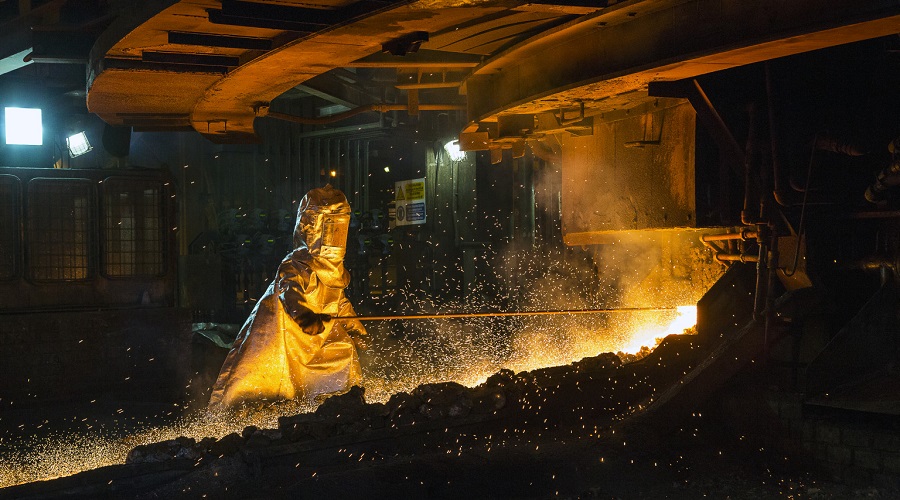Ecuador holds election closely watched by global miners

On April 11th, Ecuador will hold a presidential election that could have critical implications for the country’s nascent mining industry, though companies and analysts alike believe the two candidates facing each other in the second round will continue to support the sector.
Leftist Andrés Arauz and right-wing Guillermo Lasso have both vowed to continue promoting the oil and mining sectors, despite protests from environmental activists. They claim resource extraction is responsible for the devastation of a sixth of Ecuador’s Amazon jungle.
The Environment Front, a collective of 60 ecological and human rights organizations, evaluated each candidate’s manifestos ahead of the February 7 first round. The alliance gave Arauz a “worrying” score of 63.6 out of 100, while Lasso was deemed “toxic” to the natural habitat with just 36.5, Agence France-Presse reported.
Leftist Andrés Arauz has promised a more direct intervention of the State in the mining sector and “a firm hand” when dealing with large-scale projects
Arauz, a 36-year-old economist and a minister under the administration of former president Rafael Correa, has not declared himself anti-mining. He has, however, promised a more direct intervention of the State in the mining sector and “a firm hand” when dealing with large-scale projects.
The candidate has vowed to seek greater participation of indigenous communities and to carry out a review of existing mining concessions to ensure they are respecting legislation, human rights and the rights of the communities and nature.
Arauz has a clear development vision for the country, funded in part by a well-regulated mining industry. His priorities are to accelerate foreign direct investment (FDI) as a mechanism for job creation and ultimately tax income and foreign currency (dollar) exports,” Merlin Marr-Johnson, executive vice president of Salazar Resources, told MINING[dot]COM.
“In the short term he is interested in the income from licence fees as the mining cadastre opens up.”
Lasso, a 65-year-old entrepreneur and politician who walks with a cane due to a spinal injury from a botched medical procedure, promises to attract investment to the sector by ensuring there are clear environmental rules.

He has repeatedly stated that mining is a key source of direct and indirect jobs, as well as an important the sector for the nation’s economy. The sector generates employs more than 3,000 people in Ecuador and it was one of the very few that grew in 2020.
According to data from the Central Bank of Ecuador, it is expected to expand by 5.7% this year, accounting for 1.84% of the nation’s GDP.
Lasso considers illegal mining to be the country’s greatest threat to economic development and environmental protection.
Salazar Resources, which has a pipeline of copper-gold exploration projects across Ecuador, believes that Lasso will bring more regulations to the sector.
“Lasso said he would make referendums on mining projects mandatory and binding,” Marr-Johnson said. “He said he preferred eco-tourism to mining, and that he liked the EVs and low-carbon energy. These may be just tactics to win votes, but it does not help the mining sector,” the executive noted.
Lasso has sought to establish a dialogue with environmental groups and indigenous Ecuadorans by offering “respect for their culture, their customs.”
Right-wing Guillermo Lasso is said to be pro-mining, but he wants to ban open-pit extraction nearby water sources, grasslands, moorlands and underground water flows
From the first results of meetings held with those groups, the right-wing candidate made public his position to ban open-pit mining nearby water sources, grasslands, moorlands and underground water flows.
Now on his third attempt to become president, Lasso has said he is in favour of appointing a Minister of Environment and Water in charge of environmental conservation, but who will support the use of non-renewable natural resources.
Residents of Southern Ecuador’s city of Cuenca voted in February in favour of banning future large-scale mining activities in five nearby watershed zones – an area that stretches over 3,100 square km (1,197 square miles) and is home to more than 580,000 people.
The result of the referendum is legally binding, meaning the Ecuador’s next president will have to implement it.
“Both candidates have opened the door to referendums ahead of mining projects. Lasso indicated that he would make them country-wide, mandatory and binding. This is new and would be a key risk factor for the mining sector in Ecuador,” Marr-Johnson said.
Growing pipeline
Ecuador has gained ground as a mining investment destination over the past three years. Its first large-scale mining operations, Lundin Gold’s (TSX: LUG) Fruta del Norte, began production in 2019. The mine produced more than 200,000 ounces of gold last year.
Chinese-owned Mirador mine is working on an expansion to lift output beyond the asset’s current capacity of 130,000 tonnes a year of copper.
SolGold (LSE, TSX: SOLG), backed by BHP and Newcrest, is advancing the Cascabel copper-gold project, one of the most ambitious mining developments in Ecuador.
{{ commodity.name }}
{{ post.title }}
{{ post.date }}

Comments